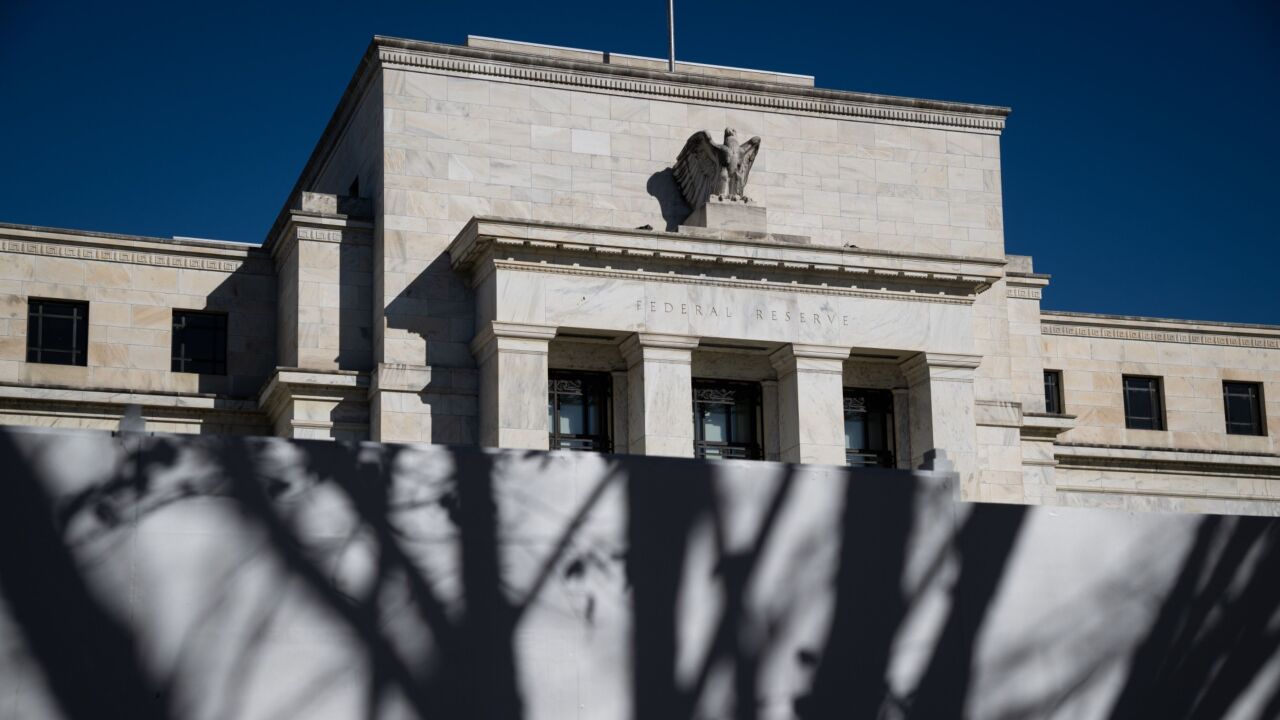A substantial cross-selling opportunity should exist for J.P. Morgan Fleming, J.P. Morgan Chase & Co.s recently formed investment management arm, as it begins its drive to boost profits in the consumer sector.
Ronald R. Dewhurst, a managing director of J.P. Morgan Fleming, said the broader product range and investment expertise coupled with J.P. Morgan Chases customer base makes for some compelling possibilities.
But the $705 billion-asset banking company, formed by the Dec. 31 merger of J.P. Morgan & Co. and Chase Manhattan Corp., is finding that determining how best to take advantage of the union is not easy.
Mr. Dewhurst, who oversees marketing and investments for mutual funds and pension products in Canada, the United States, and Latin America, said J.P. Morgans and Chases asset management groups have already blended in some ways. Their private banks as well as their marketing and sales forces have combined. In addition, on the institutional side, the asset management group is pitching Fleming products to pick up business for which J.P. Morgan would not have had the right products, Mr. Dewhurst said.
The most recent development in the blending of the companies asset management functions came on March 1, when J.P. Morgan Chase renamed its Chase Vista funds, the $66 billion-asset group of 96 equity, bond, and money market funds, JPMorgan Funds. They were combined with the $41 billion-asset, 63-portfolio J.P. Morgan Fund family, creating a single family of funds with assets of $107 billion and 159 portfolios.
By yearend the company expects to merge about 10 pairs of similar funds and to add load charges to an unspecified number of the old J.P. Morgan Funds, all of which are currently no-load, a spokeswoman said. Also, the J.P. Morgan portion all the funds names will be changed to JPMorgan so that all the names match, she said.
The Chase Vista portfolios were good, but the business lacked sponsorship within the banking company, Mr. Dewhurst said. And letting go of the Chase name might improve the marketability of the funds. Morgan and Fleming are much stronger, more recognized brands, he said. J.P. Morgan Fleming incorporates Robert Fleming Holdings Ltd., the London-based asset manager Chase bought in August.
Mr. Dewhurst would not reveal any goals, saying it was still early, but said the expanded product range and distribution network are promising. We have a wonderful opportunity now to bring Chase a bigger and more potent funds business.
But he said the company will have to use its new product range the right way. One idea in the early stages of development is finding a way to compensate branch employees for selling JPMorgan Funds.
A second idea is to find ways to increase third-party distribution of the funds, Mr. Dewhurst said. The company already distributes its funds through more than 100 banks, insurance companies, and broker-dealers. In addition, it owns a 45% stake in American Century Investments, a Kansas City, Mo., fund company with a strong defined-contribution business.
Mr. Dewhurst said the newly expanded fund group would be more attractive to these intermediaries, as they generally demand a greater range of products than had been available. He added that he is already seeing more interest from the intermediaries.
The firm is also planning to hire more wholesalers by the end of the year, but Mr. Dewhurst would not say how many or exactly when, and is also looking at ways to use the combined strengths of its investment managers to create products.
Chase brought interesting opportunities in the commercial market, since its corporate clients can be a good outlet for sales of American Centurys retirement products, he said.
But observers say J.P. Morgan Fleming unit will need more than an expanded fund group with a new name.
Consolidating the fund groups did not fill too many gaps in the lineup, said Paul Herbert, a mutual fund analyst at Chicago-based Morningstar Inc. Nor does the Morgan or Chase name carry much clout with individual investors, he said.
According to Morningstar, last year the funds all had about midrange performance nearly 52% of Chases equity and bond funds and just over 36% of the J.P. Morgan equity and bond funds beat their respective category averages. In 1999 those numbers were 52% and 43%, respectively.
Neither is a terrible shop, but neither is really a Fidelity or Vanguard or Janus, Mr. Herbert said.
Raphael Soifer, a financial services consultant in Ridgewood, N.J., said selling funds to those with $50,000 to 100,000 to invest will be difficult without a national retail presence. Unlike competitors such as Citigroup Inc., with Salomon Smith Barney, and FleetBoston Corp., with Quick & Reilly, J.P. Morgan Chase does not own a large retail brokerage, he noted.
Going after corporate business is a better opportunity, Mr. Soifer said.
J.P. Morgan and Chase have very strong relationships with corporations of all sizes. And through American Century and their own offerings, they have good products for defined contribution plans and the ability to service plans, he said.
In addition, Chases large number of corporate clients could present opportunities to manage wealth for entrepreneurs and corporate executives, he said.
Mr. Dewhurst said that, to a large degree, increasing distribution will be less a matter of performance or product range than focusing on the right sales targets and learning how to navigate third-party waters.
He says his definition of success is more qualitative than quantitative. By the end of this year, are we behaving as one company? Are we speaking with one voice?





